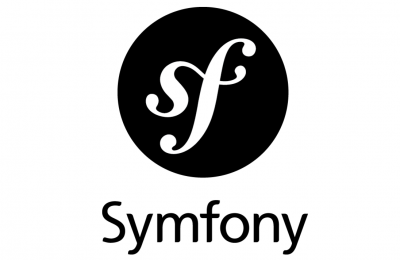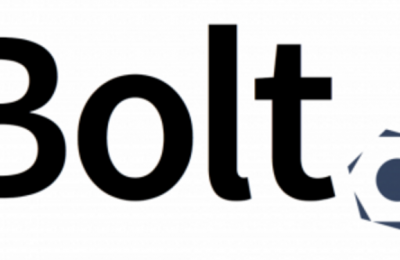Many web applications are essentially a CRUD interface. This stands for simply Create, Read, Update and Delete. This is often the backbone of applications of all sorts ranging from content management systems to custom web applications like travel sites.
GraphQL is a data query language developed by Facebook since 2012. In September 2015 Facebook released it to the public domain. GraphQL is essentially an alternative to REST and despite the name, it's not a Graph Database Query language like Cypher from the Neo4j project.
2015 was a big year for PHP an Symfony with big releases in PHP 7 and Symfony 3. Continuing on the releases both of the Open Source projects are now in the process of releasing first point-one releases with PHP 7.1 and Symfony 3.1 respectively.
Written by Jani Tarvainen on Saturday May 14, 2016
Permalink -
For a long time the LAMP CMS scene was inventing their own wheel. But following the PHP-FIG and Composer revolutions in the PHP world, many content management systems have started sharing software components and entire application development frameworks.
On Tuesday 10th of May the development team released a new major version of Bolt CMS. The Open Source content management system is a lightweight and easy to use tool for managing websites and blogs. In addition it's perfect for learning modern PHP development practises.
Written by Jani Tarvainen on Tuesday May 10, 2016
Permalink -
Tags:
symfony, php, cms, bolt
At the ng-conf event in May 2016 there were sessions discussing how Angular 2 can support server side rendering in various platforms. If you're working on a project running on Node.js, then Angular 2 is a native citizen. For other options like ASP, Java and PHP there are a few options on the table.
Many different tools now use YAML configurations for many things. They've become a staple for many developers and are both human readable and easy to parse and generate using the Symfony Yaml Component. To help with locating the files themselves, the Finder component is a great help.
In the recent years the line between frameworks and Content Management Systems have faded in the face of modern PHP conventions and sharing components. One of the original movers in this space was EllisLabs with Expression Engine - a closed source CMS built with their Open Source Code Igniter framework.
Written by Jani Tarvainen on Saturday May 7, 2016
Permalink -
Tags:
symfony, cms
Traditionally PHP code is ran on the official PHP implementation, officially known as Zend PHP. Since the launch of Zend Engine 1.0 in PHP 4 way back in the year 2000 Zend has evolved significantly, but deep down it's still the same scripting engine written in the C language.
PHP-PM is a novel way of running PHP applications. Instead of creating an exotic high performance runtime for the PHP language, it takes an alternative route to mechanism of running PHP applications with existing runtimes.
This translates to real performance gains with existing complex applications, not just impressive theoretical benchmark results.
Written by Jani Tarvainen on Sunday April 24, 2016
Permalink -
Tags:
php, php-pm, performance
The stereotypical view of software developers is that they're introverts who enjoy spending time alone working on their computers. But ever since the early days of computing there's been meetups of all sorts, including the Homebrew Computer Club which was instrumental in making Silicon Valley what it is today.
Written by Jani Tarvainen on Friday April 1, 2016
Permalink -
Tag:
symfony
Ubuntu is a popular Linux distribution based on Debian. It's often thought of as more of a desktop oriented distro, but it is quite a common for web hosting too. It is also the distribution of choice for many developers who are not that focused on Linux administration.
Written by Jani Tarvainen on Thursday March 31, 2016
Permalink -
Tags:
php, ubuntu, php7
JavaScript has come to rule the web as of late. It's everywhere, powering things from the backend to the front end. One of the interesting things that have arrived is rendering the same exact code on the server and in the browser - this is known as Isomorphic JavaScript or Universal JavaScript.
Today the world has evermore information created and consumed each passing day. Not only is content creation using tools like Instagram, YouTube and others booming, but we're also collecting more and more data using sensors in our smartphones, cars and what not. So what is the relation of these two, content and data?
eZ Platform is a next generation Content Management System which went through a complete technical reboot in 2012-2015. With the first release of eZ Platform and the complimentary product, eZ Studio the system is now completely modernized and running on the Symfony Full Stack Framework.
Today the market is awash with options available for developers to consume content using the APIs. Some go as far as describing their offering as a CMS without the bad parts, where as some choose to provide content using a data centric API platform.
All of this while the classic Content Management System players are opening up their core via APIs and modernising their technical platforms. Is there a silver bullet for Content APIs? Let's find out!
Written by Jani Tarvainen on Thursday March 24, 2016
Permalink -
Tags:
rest, api, content, cms, symfony
Way back in November 2014 the Symfony team introduced the ExpressionLanguage component. It is essentially a simplified version of control structures that you use in the Twig templating language, producing a single value in the end.
Written by Jani Tarvainen on Saturday March 19, 2016
Permalink -
Tags:
symfony, php
The Symfony Framework is a web application framework. There are countless other options for doing the same thing, ranging from lightweight microframeworks to behemoths that include everything from their own ORM to a custom templating system.
Traditionally frameworks are used to create end user solutions, but where Symfony seems to be quite good at is targeting creators of developer platforms.
Written by Jani Tarvainen on Saturday March 12, 2016
Permalink -
Tags:
symfony, php
Symfony has shipped with the Assetic front end component for a number of years. Assetic still does what it does, but in virtually every technology corner of the internet, the front end assets are nowadays built with JavaScript. In my opinion Symfony should be no different.
Written by Jani Tarvainen on Saturday March 5, 2016
Permalink -
Tags:
symfony, gulp, javascript, css
If you're just getting started with Symfony then you get bombarded with quite a few terms and concepts. Two of them are Controllers and Services. Controllers are quite straightforward in their actions (ha-ha) and simply take requests and return responses.




